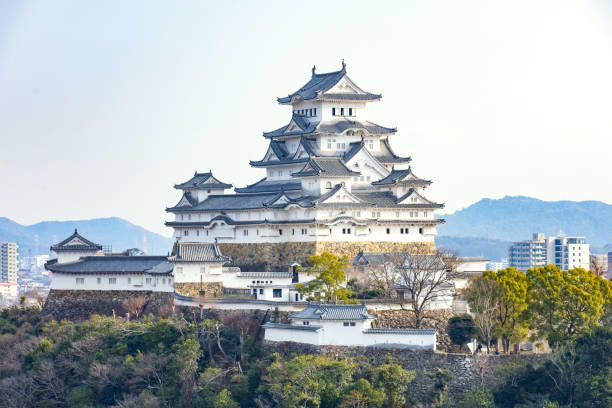
Japan is a land of timeless beauty, where ancient traditions and breathtaking natural wonders coexist in harmony. Among its many treasures, Japan’s UNESCO World Heritage Sites stand out as must-visit destinations for travelers seeking to explore the country’s rich cultural and natural heritage. From historic temples and castles to pristine forests and volcanic landscapes, these sites offer a glimpse into Japan’s past and its enduring connection to nature. In this article, we’ll take you on a journey through some of Japan’s most iconic UNESCO World Heritage Sites, highlighting their significance, history, and how to experience them.
Why Visit Japan’s UNESCO World Heritage Sites?
Japan is home to 25 UNESCO World Heritage Sites, each recognized for its outstanding universal value. These sites are not only a testament to Japan’s cultural and natural diversity but also a window into its history, spirituality, and artistry. Whether you’re a history buff, a nature lover, or simply curious about Japan’s heritage, these sites promise unforgettable experiences.
Cultural Heritage Sites
Historic Monuments of Ancient Kyoto (Kyoto, Uji, and Otsu Cities)
Kyoto, Japan’s former capital, is a treasure trove of cultural landmarks. This site includes 17 properties, such as:
- Kinkaku-ji (Golden Pavilion): A stunning Zen temple covered in gold leaf.
- Kiyomizu-dera: A wooden temple perched on a hillside with panoramic views.
- Nijo Castle: A historic castle with “nightingale floors” designed to chirp when walked on.
Why Visit? Kyoto’s temples and shrines offer a deep dive into Japan’s spiritual and artistic heritage.
Himeji Castle (Hyogo Prefecture)
Often called the “White Heron Castle” for its elegant white facade, Himeji Castle is one of Japan’s most iconic landmarks. Built in the 17th century, it’s a masterpiece of feudal architecture and a symbol of Japan’s samurai era.
Why Visit? Explore the castle’s intricate defenses, beautiful gardens, and panoramic views from the top floor.
Historic Villages of Shirakawa-go and Gokayama (Gifu and Toyama Prefectures)
These picturesque villages are famous for their gassho-zukuri farmhouses, with steep thatched roofs designed to withstand heavy snowfall.
Why Visit? Experience traditional rural life and enjoy the villages’ serene beauty, especially during winter when they’re covered in snow.
Itsukushima Shrine (Hiroshima Prefecture)
Located on Miyajima Island, this Shinto shrine is famous for its “floating” torii gate, which appears to rise out of the water during high tide.
Why Visit? The shrine’s unique architecture and scenic location make it one of Japan’s most photogenic spots.
Okinawa’s Gusuku Sites and Related Properties (Okinawa Prefecture)
These ruins of castles and sacred sites reflect the unique culture of the Ryukyu Kingdom, which thrived in Okinawa from the 12th to 19th centuries.
Why Visit? Discover Okinawa’s distinct history and culture, which differ significantly from mainland Japan.
Natural Heritage Sites
Mount Fuji (Shizuoka and Yamanashi Prefectures)
Japan’s tallest peak and a symbol of the country, Mount Fuji is revered for its beauty and spiritual significance.
Why Visit? Hike to the summit for breathtaking views or admire the mountain from the Fuji Five Lakes region.
Shirakami-Sanchi (Aomori and Akita Prefectures)
This pristine beech forest is one of the last untouched wilderness areas in Japan, home to diverse wildlife and rare plant species.
Why Visit? Explore hiking trails, waterfalls, and the serene beauty of this untouched natural wonder.
Yakushima (Kagoshima Prefecture)
A subtropical island known for its ancient cedar forests, including the iconic Jomon Sugi, a tree estimated to be over 7,000 years old.
Why Visit? Hike through lush forests, relax in natural hot springs, and experience Yakushima’s unique ecosystem.
Shiretoko Peninsula (Hokkaido)
Located in Japan’s northernmost island, Shiretoko is a remote wilderness area known for its dramatic landscapes, wildlife, and marine ecosystems.
Why Visit? Take a boat tour to see whales and dolphins, hike through pristine forests, and enjoy hot springs by the sea.
Mixed Cultural and Natural Sites
Sacred Sites and Pilgrimage Routes in the Kii Mountain Range (Wakayama, Nara, and Mie Prefectures)
This site includes the sacred mountains of Yoshino, Omine, and Koyasan, as well as the Kumano Kodo pilgrimage routes.
Why Visit? Walk the ancient trails, visit spiritual sites, and immerse yourself in Japan’s religious traditions.
Fujisan, Sacred Place and Source of Artistic Inspiration
This site encompasses Mount Fuji and its surrounding cultural landmarks, including shrines, lakes, and hot springs.
Why Visit? Experience the spiritual and artistic significance of Mount Fuji through its associated cultural sites.
Lesser-Known UNESCO Sites
Iwami Ginzan Silver Mine and its Cultural Landscape (Shimane Prefecture)
This historic silver mine played a crucial role in Japan’s economy during the Edo period.
Why Visit? Explore the mine’s tunnels, visit nearby temples, and learn about Japan’s mining history.
Hidden Christian Sites in the Nagasaki Region (Nagasaki Prefecture)
These sites tell the story of Japan’s hidden Christian communities during the Edo period, when Christianity was banned.
Why Visit? Discover the resilience and faith of Japan’s early Christians through churches, villages, and artifacts.
Tips for Visiting Japan’s UNESCO World Heritage Sites
- Plan Ahead: Some sites, like Mount Fuji and Himeji Castle, are popular and can get crowded. Book accommodations and transportation in advance.
- Respect Local Customs: Many sites are sacred or culturally significant. Follow guidelines, such as removing shoes before entering temples.
- Visit During Off-Peak Seasons: To avoid crowds, consider visiting during shoulder seasons like late autumn or early spring.
- Hire a Guide: Local guides can provide deeper insights into the history and significance of these sites.
Conclusion: A Journey Through Japan’s Heritage
Japan’s UNESCO World Heritage Sites are more than just tourist attractions—they are windows into the country’s soul. From the spiritual tranquility of Kyoto’s temples to the awe-inspiring beauty of Mount Fuji, these sites offer a journey through Japan’s history, culture, and natural wonders.
So, pack your bags, lace up your walking shoes, and get ready to explore the magic of Japan’s UNESCO World Heritage Sites. Your adventure awaits!

